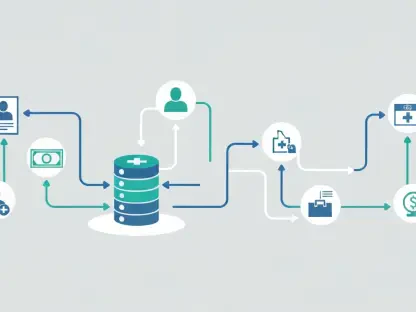Salesforce API integrations have revolutionized the way businesses operate, providing them with the tools to connect CRM systems with other platforms for enhanced operational efficiency. These integrations have come to be seen as a necessary component in today’s business ecosystem. In an effort to keep pace with technological advancements, businesses are turning to these integrations to streamline operations and deliver personalized customer experiences while reducing manual efforts.
Industry Overview of Salesforce API Integrations
The landscape of Salesforce API integrations is characterized by its dynamic growth and evolving significance within the business environment. API technology influences several segments, including application connectivity, workflow automation, and data precision, with Salesforce playing a pivotal role. Major market players are continually developing strategies to improve integration processes, while regulatory aspects, particularly concerning data security and privacy, remain relevant for businesses seeking compliance.
Key Trends and Market Analysis
Emerging Trends in Salesforce API Integration
Recent technological advancements have sparked several primary trends within the Salesforce API integration industry. Businesses are increasingly adopting these integrations to meet evolving consumer demands for more personalized experiences and automation. Market drivers, such as cloud computing and the Internet of Things (IoT), have created new opportunities for businesses to enhance their operations through seamless data connectivity and integration strategies.
Market Data and Growth Projections
Current market data indicates robust growth within the Salesforce API integration sector. The demand for integration solutions is burgeoning, driven by organizations’ need to enhance data flow and connectivity. Performance indicators show a promising trajectory, with predictions indicating sustained expansion as businesses continue to adopt new technologies and integration solutions to maintain competitiveness.
Challenges and Solutions in Salesforce API Integration
Despite the promising growth, the industry faces several challenges, including complexities related to technological implementations, regulatory compliance, and market dynamics. Overcoming these requires strategic planning and addressing potential risks. Solutions such as robust authentication protocols, compliance-focused strategies, and adopting scalable API integration models enable businesses to successfully navigate these obstacles and ensure seamless integration processes.
Regulatory Considerations for Salesforce API Integration
The regulatory landscape presents crucial considerations for Salesforce API integration, as businesses must adhere to significant laws and standards governing data security and privacy. Compliance measures extend beyond mere adherence; they shape industry practices and influence integration strategies. By focusing on compliance and implementing robust security measures, businesses can mitigate risks and facilitate secure API operations.
Future Outlook and Industry Innovations
Looking ahead, Salesforce API integrations are poised for continued evolution, driven by emerging technologies such as artificial intelligence and machine learning, which hold potential to disrupt traditional integration models. Anticipated changes in consumer behavior and technological advancements suggest that businesses will experience growth areas in API solutions, embracing innovations that align with global economic conditions and regulatory requirements.
Conclusion and Recommendations
The evolution of Salesforce API integrations has transformed business operations by enabling seamless data connectivity and automation across platforms. Reflecting on industry insights, it is evident that these integration solutions are crucial for ongoing growth and competitiveness. Future prospects rely on innovation, regulatory compliance, and strategic investments in integration technologies to maximize potential and harness the extensive benefits these solutions offer. To achieve this, businesses should focus on continuous improvement, embracing technological changes, and adopting scalable models that enhance their integration strategies.









